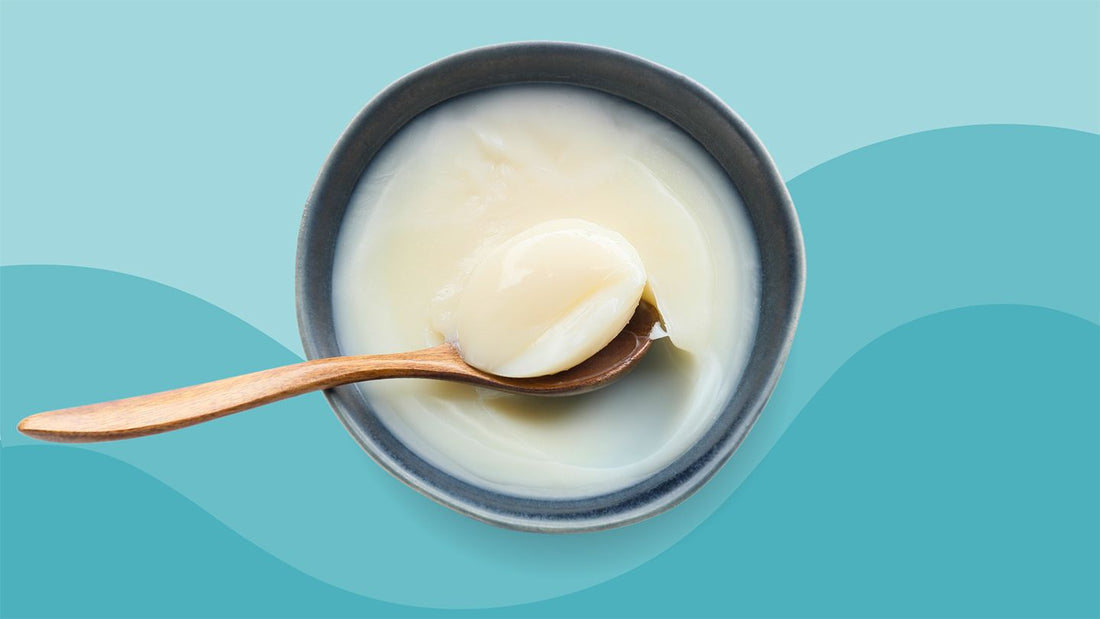Beef tallow is having a major glow-up on TikTok. Influencers are calling it “nature’s moisturizer,” showing off buttery soft jars of “grass-fed cow fat” being slathered onto dry skin, baby cheeks, and yes—acne. It’s all being framed as a miracle product with “essential nutrients,” “anti-inflammatory properties,” and “deep hydration.”
But let’s slow down and talk facts.
Because while beef tallow might have been used in frontier days when skin care products were limited to whatever you could render in a pan, that doesn’t mean it belongs in a modern acne-prone skincare routine.
In fact, for anyone dealing with breakouts, irritation, sensitive skin, or compromised skin barrier function—beef tallow can be downright damaging. Here’s why.
What Is Beef Tallow, Anyway?
Beef tallow is rendered fat from the fatty tissue of cows, typically from around the kidneys or abdomen. When melted down and strained, it becomes a semi-solid fat at room temperature—similar to coconut oil or shea butter, but made from animal sources.
It’s often promoted in DIY circles or small-batch tallow skincare companies as a “natural” alternative to commercial moisturizers. It’s used in tallow balm, lip balm, tallow soap, body butter, and even face cream. The narrative is that it’s packed with fat-soluble vitamins like vitamin A, D, E, and K, and mimics the structure of our own sebum.
But the truth is more complicated.
Fatty Acid Composition: The Real Problem with Tallow
One of the biggest issues with beef tallow for acne-prone or sensitive skin is its fatty acid profile—specifically, its high oleic acid content.
Beef tallow contains:
-
42%–47% oleic acid (a monounsaturated omega-9 fatty acid)
-
~26% palmitic acid
-
~14% stearic acid
-
Trace amounts of linoleic acid (an essential omega-6 fatty acid)
This fatty acid profile is more similar to olive oil or coconut oil—both of which are known to be problematic for acne-prone skin. Oleic acid is a heavier, richer fatty acid that can feel moisturizing for dry skin, but can clog pores, disrupt the microbiome, and trap bacteria when used consistently—especially in occlusive products like tallow balm.
On the flip side, human skin’s sebum is naturally higher in linoleic acid, especially in individuals who are acne-prone. In fact, acne-prone skin is often deficient in linoleic acid, and studies show that restoring this balance with plant-based oils like jojoba oil or safflower oil can actually reduce comedones and improve the skin’s barrier function.
Using tallow—especially on acne-prone skin—means you're pushing the skin even further out of balance.
The Calcium Catastrophe: A Lesser-Known Skin Disruptor
Here’s where things get really interesting—and way under-discussed on social media.
A 2008 study published in the Journal of Investigative Dermatology found that oleic acid (again, the primary fatty acid in beef tallow) disrupts the calcium gradient in keratinocytes (your skin cells). Here's the link to the study
Normally, calcium levels in the skin are tightly regulated: low in the lower layers and higher in the upper layers. This calcium gradient is crucial for cell signaling, skin barrier formation, and proper desquamation (a.k.a. natural exfoliation).
When oleic acid overwhelms this system, it creates a calcium flood inside the cells, which can trigger cell death (apoptosis). That means fewer healthy skin cells, impaired regeneration, and a broken skin barrier.
What does that lead to? Big time TEWL (transepidermal water loss), inflammation, redness, and sensitivity—basically everything you’re trying to avoid, especially if you’re dealing with acne, rosacea, eczema, or post-acne healing.
But It’s Natural! Isn’t That a Good Thing?
Nope. Not always. Poison ivy is natural. Arsenic is natural. The phrase “natural ingredients” has become marketing fluff that often ignores actual skin biology.
Beef tallow is being used as a poster child for the anti-seed oil, anti-“toxic chemicals” movement that’s booming on platforms like TikTok. But just because tallow comes from a cow doesn’t mean it’s good for all skin types, or that it performs better than plant-based oils that are naturally higher in linoleic acid and skin-compatible antioxidants.
In fact, many tallow skincare products contain added essential oils for scent—like lavender, rosemary, frankincense—which increases the risk of allergic reactions and skin sensitization.
So no, the fact that something is "made in small batches with free shipping and ice packs" doesn't make it a healthy choice for your skin. It's still rendered animal fat at the end of the day.
What About Grass-Fed or Small-Batch Tallow?
Even when beef tallow is described as “grass-fed,” “local,” or “ethically sourced,” that doesn’t automatically make it better for your skin. The fatty acid composition doesn’t change dramatically between grain-fed and grass-fed tallow. Both types still contain a high percentage of oleic acid, and both carry the same potential to disrupt the skin barrier.
From a cosmetic product safety standpoint, it’s also worth mentioning that animal-based ingredients like tallow require proper handling, storage, and purification. When not properly processed, they can introduce risks that plant-based oils typically avoid—including microbial contamination or the presence of residual compounds from animal feed or processing.
Additionally, while rare, some people may have reactions to topical animal fats due to allergies, immune sensitivity, or digestive-related issues that carry over into skin response. So even though beef tallow is “natural,” it can still trigger side effects in sensitive skin.
Misleading Claims: What Social Media Gets Wrong
Let’s be real: social media skincare trends have a bad habit of ignoring nuance and jumping straight to “this one thing fixed all my problems.” The beef tallow trend is no different.
People are quick to post a glowing day-one selfie after slathering tallow balm on irritated skin—but they’re not posting the flare-up they had two weeks later when their skin barrier collapsed.
Or the purging, stinging, clogged pores, and slow buildup of inflammation that happens with regular use. Most of the videos don’t mention any patch testing, long-term monitoring, or consultation with a board-certified dermatologist.
They also ignore the differences between different skin types. What works for someone with dry, eczema-prone skin may be a nightmare for someone with oily skin, acne, or sensitive skin.
Why It Matters for Acne-Prone Skin
If you’re treating acne, your priority should be to reduce inflammation, balance sebum, and support the skin’s natural barrier. That means avoiding ingredients that:
-
Are high in oleic acid (like tallow, olive oil, coconut oil)
-
Are occlusive without breathable moisture (like heavy tallow balms)
-
Can disrupt cell signaling or trigger immune reactions
The bottom line? Tallow may feel good short-term, but it causes long-term problems—like sensitivity, delayed healing, and rebound acne.
You’re better off with a skincare product that’s designed to protect the skin barrier, hydrate with hyaluronic acid, and support gentle exfoliation with linoleic acid-rich oils or non-pore-clogging emollients.
Better Options for Deep Hydration
If you’re looking for alternatives to tallow products that actually support your skin’s health long-term, here are some plant-based, acne-safe emollients:
-
Jojoba oil (mimics skin’s own natural oils)
-
Safflower oil (high in linoleic acid)
-
Hyaluronic acid serums layered under occlusives like silicone-based moisturizers
Final Thoughts: Don't Fall for the Hype
We’re living in the golden age of skincare information—and misinformation. Beef tallow skincare might feel like a nostalgic return to “simple” ingredients, but when you break it down, it’s not the miracle it claims to be.
There are significant research gaps around the side effects of long-term tallow use, especially on acne-prone skin, and we already have solid studies that show the damaging effects of oleic acid, the calcium disruption, and increased TEWL that follow.
Just because something is trending doesn’t mean it’s right for your skin. And if your skin is already struggling—acne, inflammation, sensitivity—you don’t need a trend. You need a plan.
If you’re curious about what ingredients actually support skin health and help acne-prone skin thrive, check out our skincare line built on clinical-grade, acne-safe formulations—not cow fat.
📍Have questions or got swept up in the tallow trend? DM me or book a consult. Let’s clear things up—no beef required.
To get more in-depth skincare information, you can read some of our other blogs here:
What Does Retinol Actually Do For Your Skin?
Sunscreen and Acne: An Expert's Guide for Acne-Prone Skin
Have you tried slugging? Can it be good for acne-prone skin?


